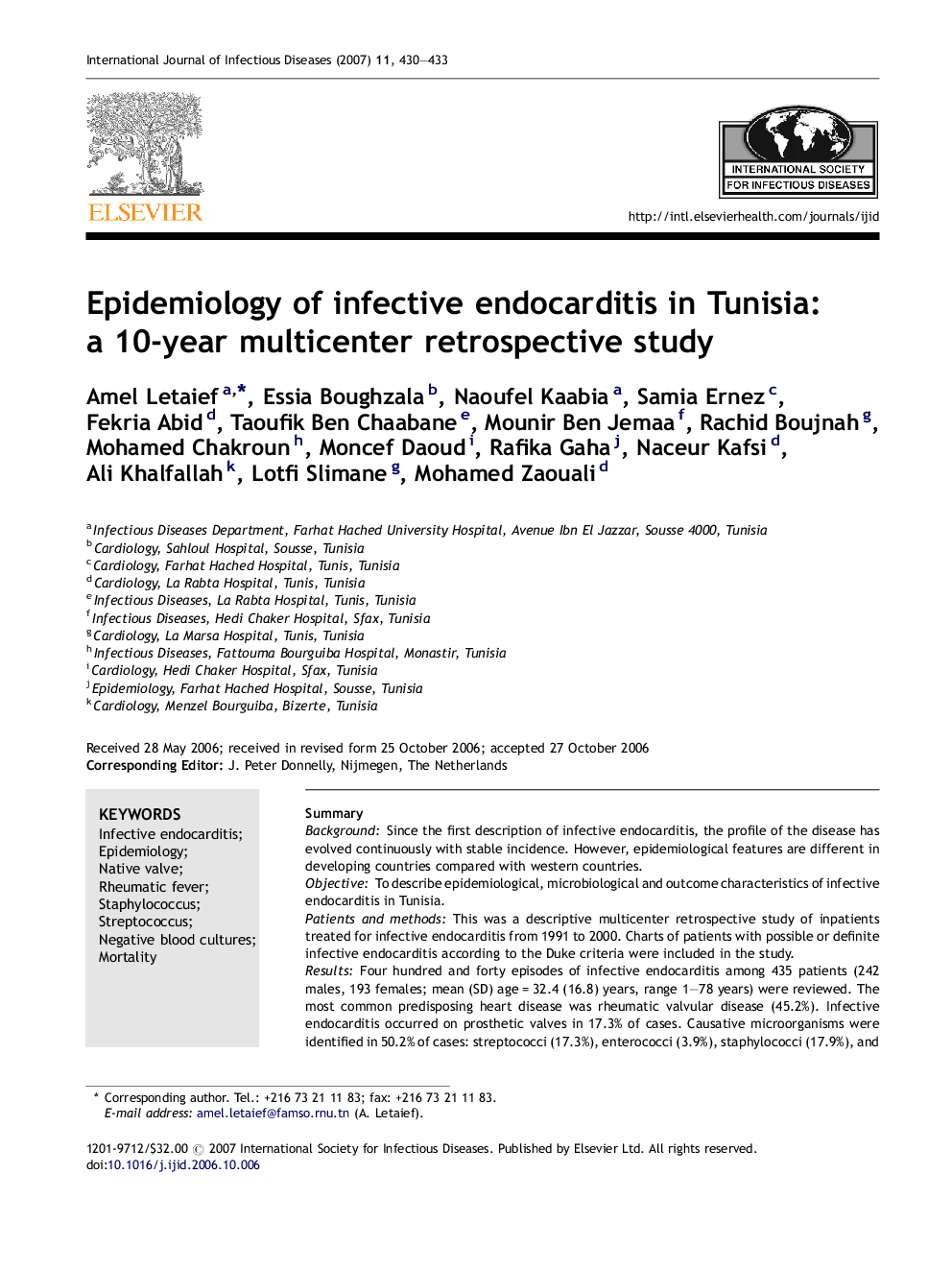| Article ID | Journal | Published Year | Pages | File Type |
|---|---|---|---|---|
| 3365129 | International Journal of Infectious Diseases | 2007 | 4 Pages |
SummaryBackgroundSince the first description of infective endocarditis, the profile of the disease has evolved continuously with stable incidence. However, epidemiological features are different in developing countries compared with western countries.ObjectiveTo describe epidemiological, microbiological and outcome characteristics of infective endocarditis in Tunisia.Patients and methodsThis was a descriptive multicenter retrospective study of inpatients treated for infective endocarditis from 1991 to 2000. Charts of patients with possible or definite infective endocarditis according to the Duke criteria were included in the study.ResultsFour hundred and forty episodes of infective endocarditis among 435 patients (242 males, 193 females; mean (SD) age = 32.4 (16.8) years, range 1–78 years) were reviewed. The most common predisposing heart disease was rheumatic valvular disease (45.2%). Infective endocarditis occurred on prosthetic valves in 17.3% of cases. Causative microorganisms were identified in 50.2% of cases: streptococci (17.3%), enterococci (3.9%), staphylococci (17.9%), and other pathogens (11.1%). Blood cultures were negative in 53.6% and no microorganism was identified in 49.8%. Early valve surgery was performed in 51.2% of patients. The in-hospital mortality was 20.6%.ConclusionInfective endocarditis is still frequently associated with rheumatic disease among young adults in Tunisia, with a high frequency of negative blood cultures and high in-hospital mortality, given that the population affected is relatively young.
